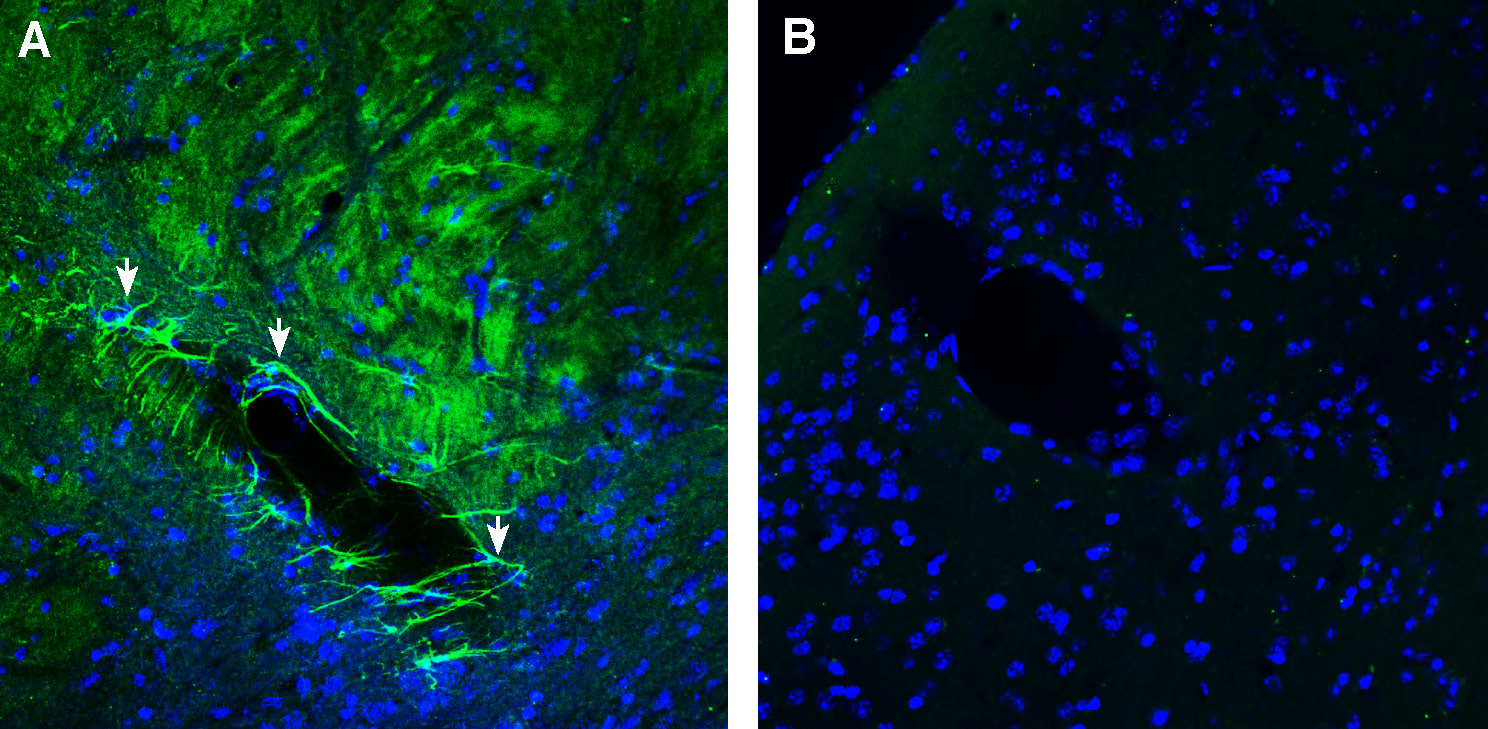Overview
- Peptide (C)KGRKGVYTENERLMG, corresponding to amino acid residues 225 - 239 of mouse GPR143 (Accession P70259). Intracellular, 3rd loop.

GPR143 Blocking Peptide (#BLP-GR083)
 Western blot analysis of mouse brain membranes (lanes 1 and 3) and rat brain lysates (lanes 2 and 4):1-2. Anti-GPR143 Antibody (#AGR-083), (1:500).
Western blot analysis of mouse brain membranes (lanes 1 and 3) and rat brain lysates (lanes 2 and 4):1-2. Anti-GPR143 Antibody (#AGR-083), (1:500).
3-4. Anti-GPR143 Antibody, preincubated with GPR143 Blocking Peptide (BLP-GR083). Western blot analysis of rat eye lysate:1. Anti-GPR143 Antibody (#AGR-083), (1:400).
Western blot analysis of rat eye lysate:1. Anti-GPR143 Antibody (#AGR-083), (1:400).
2. Anti-GPR143 Antibody, preincubated with GPR143 Blocking Peptide (BLP-GR083). Western blot analysis of human ARPE-19 retinal cell epithelium cell line lysate (lanes 1 and 3) and Malme-3M melanoma cell line lysate (lanes 2 and 4):1-2. Anti-GPR143 Antibody (#AGR-083), (1:400).
Western blot analysis of human ARPE-19 retinal cell epithelium cell line lysate (lanes 1 and 3) and Malme-3M melanoma cell line lysate (lanes 2 and 4):1-2. Anti-GPR143 Antibody (#AGR-083), (1:400).
3-4. Anti-GPR143 Antibody, preincubated with GPR143 Blocking Peptide (BLP-GR083).
 Expression of GPR143 in mouse corpus callosum.Immunohistochemical staining of perfusion-fixed frozen mouse brain sections using Anti-GPR143 Antibody (#AGR-083), (1:300), followed by goat anti-rabbit-AlexaFluor-488. A. GPR143 immunoreactivity (green) appears in the corpus callosum (arrows). B. Pre-incubation of the antibody with GPR143 Blocking Peptide (BLP-GR083), suppressed staining. Cell nuclei are stained with DAPI (blue).
Expression of GPR143 in mouse corpus callosum.Immunohistochemical staining of perfusion-fixed frozen mouse brain sections using Anti-GPR143 Antibody (#AGR-083), (1:300), followed by goat anti-rabbit-AlexaFluor-488. A. GPR143 immunoreactivity (green) appears in the corpus callosum (arrows). B. Pre-incubation of the antibody with GPR143 Blocking Peptide (BLP-GR083), suppressed staining. Cell nuclei are stained with DAPI (blue). Expression of GPR143 in mouse striatum.Immunohistochemical staining of perfusion-fixed frozen mouse brain sections using Anti-GPR143 Antibody (#AGR-083), (1:300), followed by goat anti-rabbit-AlexaFluor-488. A. GPR143 immunoreactivity (green) appears in the ventral striatum region (arrows). B. Pre-incubation of the antibody with GPR143 Blocking Peptide (BLP-GR083), suppressed staining. Cell nuclei are stained with DAPI (blue).
Expression of GPR143 in mouse striatum.Immunohistochemical staining of perfusion-fixed frozen mouse brain sections using Anti-GPR143 Antibody (#AGR-083), (1:300), followed by goat anti-rabbit-AlexaFluor-488. A. GPR143 immunoreactivity (green) appears in the ventral striatum region (arrows). B. Pre-incubation of the antibody with GPR143 Blocking Peptide (BLP-GR083), suppressed staining. Cell nuclei are stained with DAPI (blue).
- Bueschbell, B. et al. (2022) Front. Mol. Biosci. 9, 873777.
- Giordano, F. et al. (2009) Hum. Mol. Gen. 18,23.
- Bakker, R. et al. (2022) Prog. Ret. Eye. Res. 91, 101091.
G-protein coupled receptor 143, GPR143, also known as ocular albinism type 1 protein, OA1, is an orphan GPCR expressed intracellularly in pigment-producing cells on the melanosomal membrane and serves to regulate melanosome size and mediate protein transport to the melanosome via the endolysosomal system.1
GPR143 is encoded by the OA1 gene, composed of 404 amino acids with 7 transmembrane helices, and associates with several Gα and Gβ subunits, as well β-Arrestin. Potential ligands for GPR143 include L-3,4-dihydroxyphenylalanine (L-DOPA) and dopamine. High dose L-DOPA treatment leads to intracellular Ca2+ influx and β-Arrestin recruitment. GPR143 has two sorting signals, a dileucine motif in ICL3 and a tryptophan-glutamic acid doublet in the C-terminal tail, which are necessary for lysosomal and melanosomal localization. Functional components of endosomal sorting complexes required for transport (ESCRT) are essential for intracellular sorting and ubiquitination. Due to the unique localization of GPR143 within the cell and its topological orientation, ligands are likely required to bind from the organelle lumen.1
GPR143 is largely expressed on the melanosomal membrane of melanocytes, the pigment producing cells that are responsible for producing melanin in the skin and eyes. Melanin is a pigment that is crucial for the protection of skin and eyes from damaging UV light, as well as for the normal development of the optic system and eye function. Mutations in the OA1 gene and its subsequent protein products lead to ocular albinism due to melanosome malformation. Albinism is a pigment disorder characterized by decreased melanin in affected tissues, which leads to adverse effects including foveal hypoplasia and chiasmal misrouting.1,3
GPR143 pathophysiology is also implicated in various degenerative diseases, including macular degeneration and Parkinson’s disease, as well as playing a possible role in cancer susceptibility and progression.1,2
Application key:
Species reactivity key:
Anti-GPR143 Antibody (#AGR-083) is a highly specific antibody directed against an epitope of the mouse protein. The antibody can be used in western blot and immunohistochemistry applications. It has been designed to recognize GPR143 from rat, mouse and human samples.
